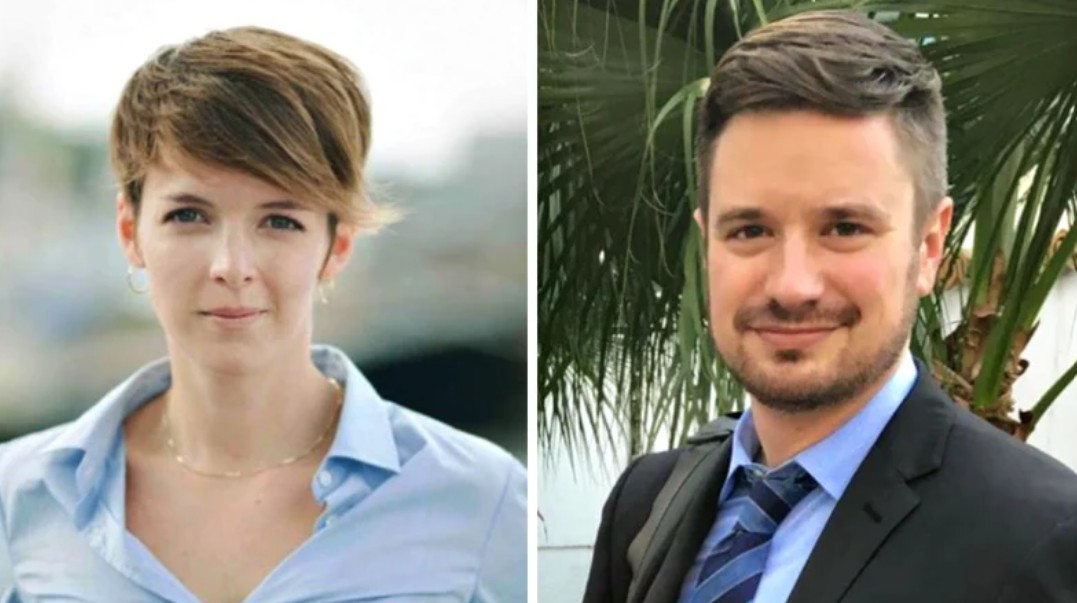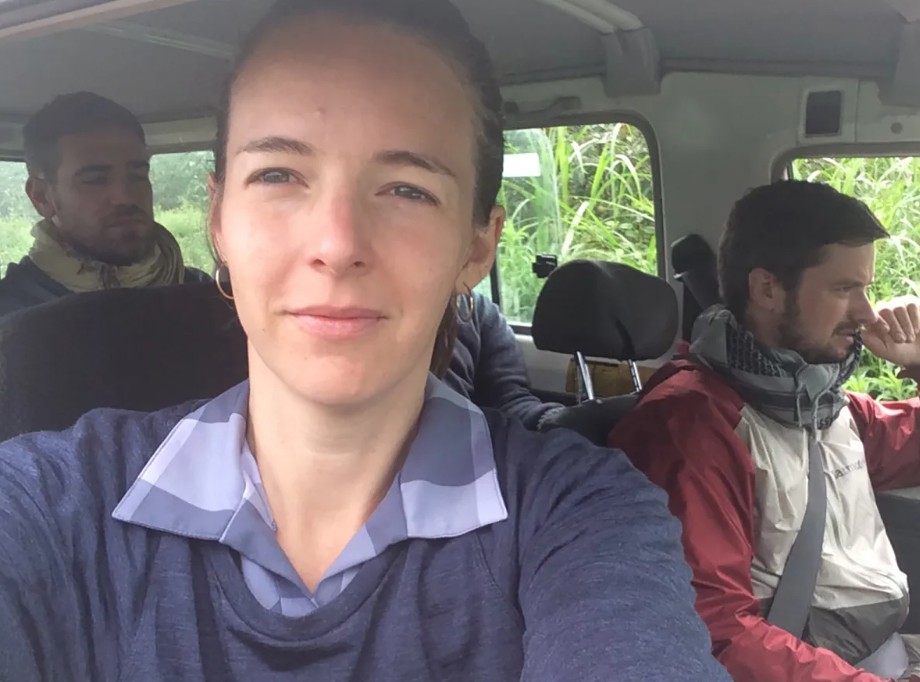Zaida Catalan Video and Congo Raises International Outrage
The release of a disturbing video allegedly showing the murder of two United Nations experts in the Democratic Republic of Congo (DRC) has triggered renewed international alarm and condemnation. The footage, presented by the Congolese government to journalists in the capital Kinshasa, appears to depict the execution of American Michael Sharp and Swedish-Chilean national Zaida Catalán, both of whom had been working to investigate human rights abuses linked to ongoing violence in the Kasai region.

The United Nations has described the contents of the video as horrific and vowed to conduct a thorough investigation into their deaths. Meanwhile, the Congolese government maintains that the video proves that an anti-government militia, rather than state forces, carried out the killings. The incident has intensified scrutiny on both the conflict in Kasai and the political tensions surrounding President Joseph Kabila’s administration.
Contents
Background of the Victims and Video
Michael Sharp and Zaida Catalán were members of a UN panel tasked with monitoring the implementation of sanctions and investigating violent conflicts throughout the DRC. Their work required traveling to regions under the influence of armed groups, documenting abuses, and speaking with local populations to understand the dynamics of violence. The two were accompanied by their interpreter, Betu Tshintela, a Congolese national who helped guide and translate during field missions.
The uncensored video of Zaida Catalán in Congo has sparked global condemnation
In March, the group was dispatched to Kasai Central, a province that has seen a dramatic rise in violence since the emergence of the Kamuina Nsapu militia. The conflict originated after the death of a local tribal leader who had opposed the central government. His followers, calling themselves the Kamuina Nsapu, launched an uprising in mid-2016, claiming the government had undermined traditional authority. The militia’s revolt has led to escalating clashes with state forces, resulting in mass displacement, widespread fear, and the destruction of villages throughout the region. Humanitarian and peacekeeping workers have described the conflict as chaotic and brutal, with civilians frequently caught in the crossfire.
Kidnapping and Discovery of the Bodies
Sharp, Catalán, and Tshintela were abducted on March 12 while traveling by motorcycle along remote rural routes. The UN had reported communication difficulties with the team shortly before their disappearance, and efforts to locate them were complicated by the volatile security situation and the lack of state control in the region. Two weeks later, their bodies were discovered in shallow graves. The remains indicated that both Sharp and Catalán had been executed, while Catalán had also been beheaded. The fate of Tshintela remains uncertain, and his body was not immediately recovered.

The news of the killings shocked the international community. UN Secretary-General António Guterres stated that he was “deeply saddened and disturbed,” while humanitarian organizations noted that the deaths underscored the extreme risks faced by those working to document atrocities in conflict zones.
The Video and Its Content
The controversy deepened when the Congolese government screened a video for journalists on a Monday in Kinshasa. According to multiple reporters present, including those from Reuters, the footage appears to show Sharp and Catalán walking along a path surrounded by several men wearing red headbands, a symbol associated with the Kamuina Nsapu militia. The video, narrated by a Congolese police spokesperson, then cuts to the two investigators sitting on the ground. Moments later, they are shown being shot. The most disturbing scene, observers say, shows Catalán being beheaded after her execution.
The graphic nature of the video prompted immediate condemnation from the United Nations. “We are utterly horrified by what appears to be the killing of Michael Sharp and Zaida Catalán,” said UN human rights spokesperson Ravina Shamdasani. The UN stated that its team in the DRC had viewed the footage and verified that it strongly resembled the investigators and the circumstances surrounding their deaths. However, the organization emphasized the need for a full and independent inquiry into the events depicted in the recording.
Government Response and Justification
The Congolese government has asserted that the release of the video proves that the militia, not government forces, carried out the killings. Government spokesman Lambert Mende argued that authorities showed the video because they were being unfairly accused of complicity in the murders. “Our police and soldiers are accused of being implicated in the assassination of the two UN experts. That is not the case,” Mende said. “The images speak for themselves.”
However, key questions remain unanswered, including how the government obtained the footage and whether the individuals in the video can be conclusively identified as militia fighters. Critics have noted that the government has been eager to deflect accusations of wrongdoing, especially amid accusations of human rights violations by state forces in Kasai. Mende declined to provide details about the source of the video, stating only that police had “secured” it.
To reinforce its argument, the government also presented another compilation of video footage showing dozens of decapitated bodies dressed in police uniforms. Officials said these victims were members of government security forces killed by the Kamuina Nsapu militia. The government framed the killings of the UN investigators as part of a wider pattern of militia brutality.
United Nations Reaction and Demand for Accountability
The UN has launched its own investigation into the deaths and has urged the Congolese government to cooperate fully. Shamdasani emphasized that accountability is crucial: “We call on the authorities to ensure that a swift, credible, and transparent investigation is conducted.” If the Congolese government fails to act, the UN has suggested that the matter could be referred to the International Criminal Court, which has jurisdiction over war crimes and crimes against humanity.
The UN has also expressed broader alarm over the scale of violence in Kasai. Reports indicate that at least 400 people have been killed since the conflict escalated in 2016. UN observers have identified 40 mass grave sites, raising fears of widespread extrajudicial killings. The international community has repeatedly urged both the Congolese government and militia groups to cease violence against civilians.
Political Context and Heightened Tensions
The tragedy occurs against the backdrop of deep political tension in the DRC. President Joseph Kabila had remained in power beyond the end of his constitutional mandate in December 2016, sparking protests and accusations of authoritarianism. Several high-ranking Congolese officials have been placed under Western sanctions for alleged abuses, including violent crackdowns on protesters. The government has rejected these accusations, calling them politically motivated and intrusive.
Critics argue that the conflict in Kasai has been exacerbated by the broader political instability and poor governance. Some international observers believe that the government may have an interest in allowing or even encouraging chaos in certain regions to justify tightened internal control or delay elections. Others see the conflict as a tragic consequence of weak state institutions and long-standing tensions over local power structures.
The release of the video showing the presumed execution of Michael Sharp and Zaida Catalán has brought global attention to the violence in the Kasai region and the dangers faced by those who work to document human rights abuses. While the Congolese government insists that the footage exonerates state forces, many questions remain regarding responsibility, transparency, and the chain of events that led to the killings. The United Nations continues to press for a rigorous investigation and has left open the possibility of seeking international judicial intervention.
Ultimately, the deaths of the two investigators highlight the urgent need for accountability, stability, and protection for civilians and humanitarian workers in the DRC. The international community will continue watching closely to see whether justice is served or whether the violence and uncertainty will persist unchecked.
Daily Hot News -Funky Town Cartel Video and A Symbol of Digital Terror
DoorDash Girl SA Original Video Sparks Controversy
Djina Dzinovic Video and A Private Scandal Goes Public
Nama Cooler Box Unblurred Video and The Disturbing Clip
Balin Miller Death Fall Livestream Video on TikTok, Twitter, Reddit and El Capitan
Manchester Synagogue Stabbing Attack and Shooting Video
Edwin Cruz Gomez Video and Jhoanny Gomez-Alvarez Death
